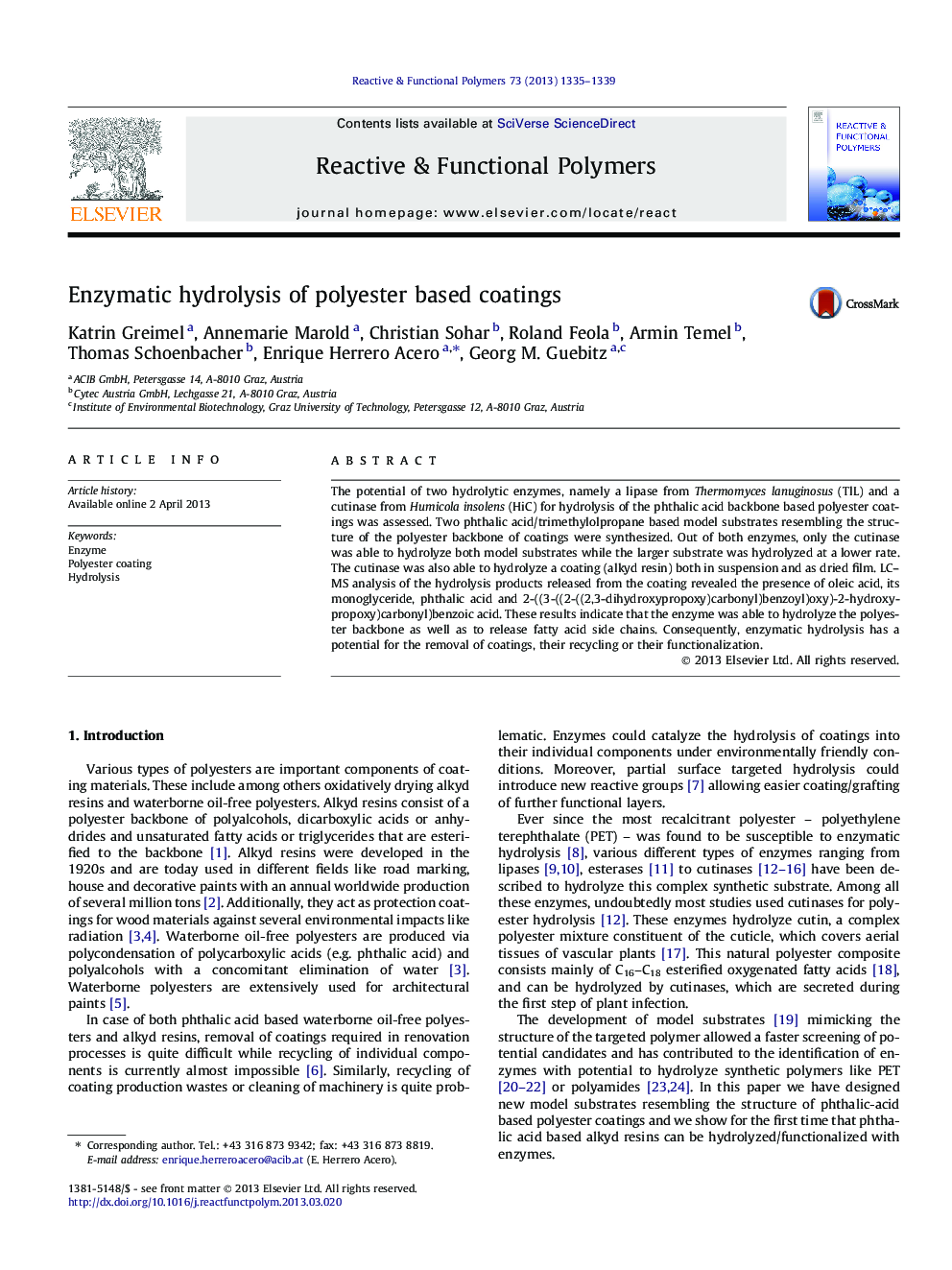| Article ID | Journal | Published Year | Pages | File Type |
|---|---|---|---|---|
| 5210075 | Reactive and Functional Polymers | 2013 | 5 Pages |
Abstract
The potential of two hydrolytic enzymes, namely a lipase from Thermomyces lanuginosus (TlL) and a cutinase from Humicola insolens (HiC) for hydrolysis of the phthalic acid backbone based polyester coatings was assessed. Two phthalic acid/trimethylolpropane based model substrates resembling the structure of the polyester backbone of coatings were synthesized. Out of both enzymes, only the cutinase was able to hydrolyze both model substrates while the larger substrate was hydrolyzed at a lower rate. The cutinase was also able to hydrolyze a coating (alkyd resin) both in suspension and as dried film. LC-MS analysis of the hydrolysis products released from the coating revealed the presence of oleic acid, its monoglyceride, phthalic acid and 2-((3-((2-((2,3-dihydroxypropoxy)carbonyl)benzoyl)oxy)-2-hydroxypropoxy)carbonyl)benzoic acid. These results indicate that the enzyme was able to hydrolyze the polyester backbone as well as to release fatty acid side chains. Consequently, enzymatic hydrolysis has a potential for the removal of coatings, their recycling or their functionalization.
Keywords
Related Topics
Physical Sciences and Engineering
Chemistry
Organic Chemistry
Authors
Katrin Greimel, Annemarie Marold, Christian Sohar, Roland Feola, Armin Temel, Thomas Schoenbacher, Enrique Herrero Acero, Georg M. Guebitz,
